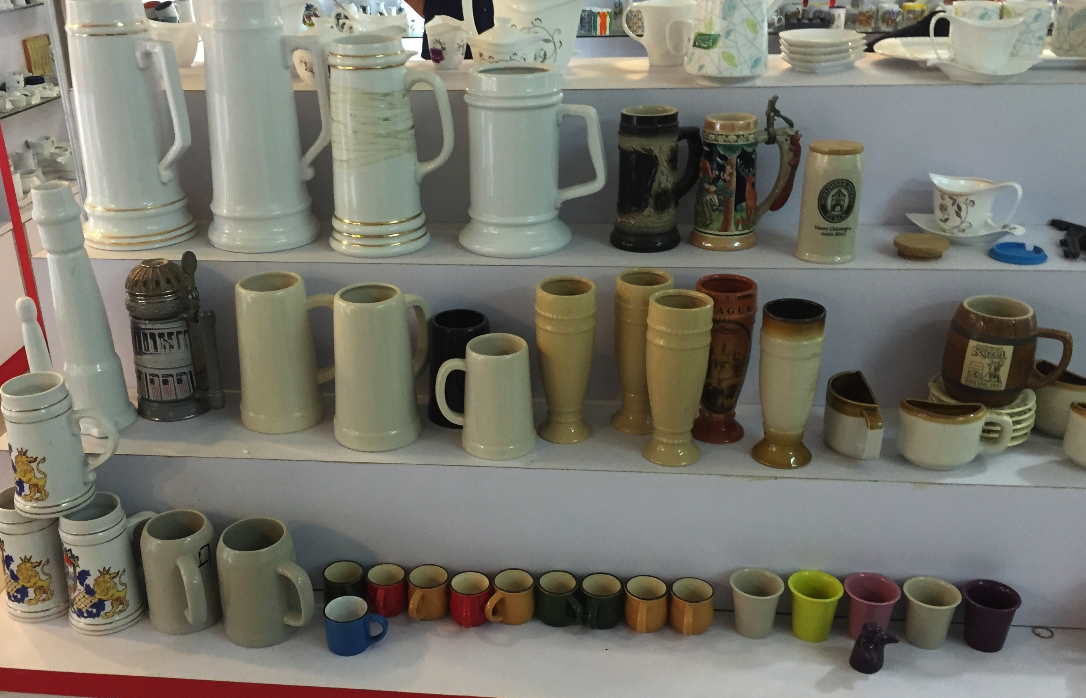Earthenware

This page is still under construction (wv-kh)
Stoneware naturally belongs - like porcelain - to the large group of ceramics. Experts refer to this "highly fired" variant as fine ceramics. Tableware made of stoneware can be recognized mainly by its white-yellowish or greyish colour of the body. Although the body is sintered and densely fired, it is not translucent, although when fired it produces a similarly high tone as porcelain. The unglazed body of the stoneware is dense and impermeable to water, but far inferior to the porosity of hard porcelain.
According to Mohs, the usual hardness of the body is 3 to 4, which means that stoneware can be scored from steel - i.e. cutlery. This is due to the low firing temperature. Stoneware is preheated at approx. 900 °C in a biscuit firing and receives the glaze firing at approx. 1,200 °C to max. 1,300 °C.
Why are there stoneware at all?
The settlement of all ceramic manufacturers was traditionally carried out as a raw material-oriented branch of industry or trade. While porcelain gains its plasticity from high-quality kaolin, a lower-quality mixture of clay and kaolin is sufficient for stoneware production. This clay was mainly found in the regions "Westerwald", "Waldenburg" and "Bunzlau". Thus, around the year 1300 AD, the first stoneware makers settled in the Rhenish plain around Siegburg. The original glazes of stoneware in Germany consisted of the grey or blue shining salt glazes (see picture above). Much older than the German "Kannenbacken" is the stoneware from Asia with its Selandon glazes.
A region known for stoneware is for example the "Kannenbäcker Land" around the area of Höhr-Grenzhausen. Stoneware was classically used to make mainly decorative objects and drinking vessels for "the common people". Porcelain, on the other hand, was reserved for aristocratic houses. Due to the raw material, the lower firing temperature and a simple, rough processing, stoneware was considerably cheaper than porcelain. Probably the most famous representative of German stoneware is the "Bembel" - from which the inns in Hesse still serve cider today.
Stoneware in the gastronomy
Stoneware is a classic and an expression of regional solidarity. An "Ebbelwoi" (apple wine) in an inn without "Bembel" is hardly imaginable for a Hessian. Similarly, some breweries still serve their beer specialities from stoneware mugs - although the subject is not without its dangers. Stoneware as hollow vessels (drinking cups, Bembel, jugs, pitchers, etc.) in the gastronomy should generally not cause any problems, as it does not have to be cut-resistant. The risk of corrosion is also relatively low, as the vessels usually run in the glass washer or are even cleaned by hand in the Spülboy.
In terms of edge chipping and mechanical strength, stoneware scores with its thick, robust body and in this respect is hardly inferior to fine tableware. In many mountain huts and in many Bavarian inns you can still find true treasures made of stoneware with valuable decorations and refinements.
Stoneware by Holst Porzellan
In our current collection we do not carry articles made of stoneware. With the bankruptcy of the factory "Marzi & Remi" in 1990, we also lost a long-standing partner, who, together with the agency Peter Jahr, represented an important part of "Salt Glaze Ceramics" in the trade exhibition "Musterhaus am Messekreisel" in Cologne. We have stoneware produced in partner plants in Asia on request within the framework of our OEM business for breweries, cideries and wineries.
Note: For a better differentiation of the ceramic types, please also read our article "Quality classes of ceramics".
